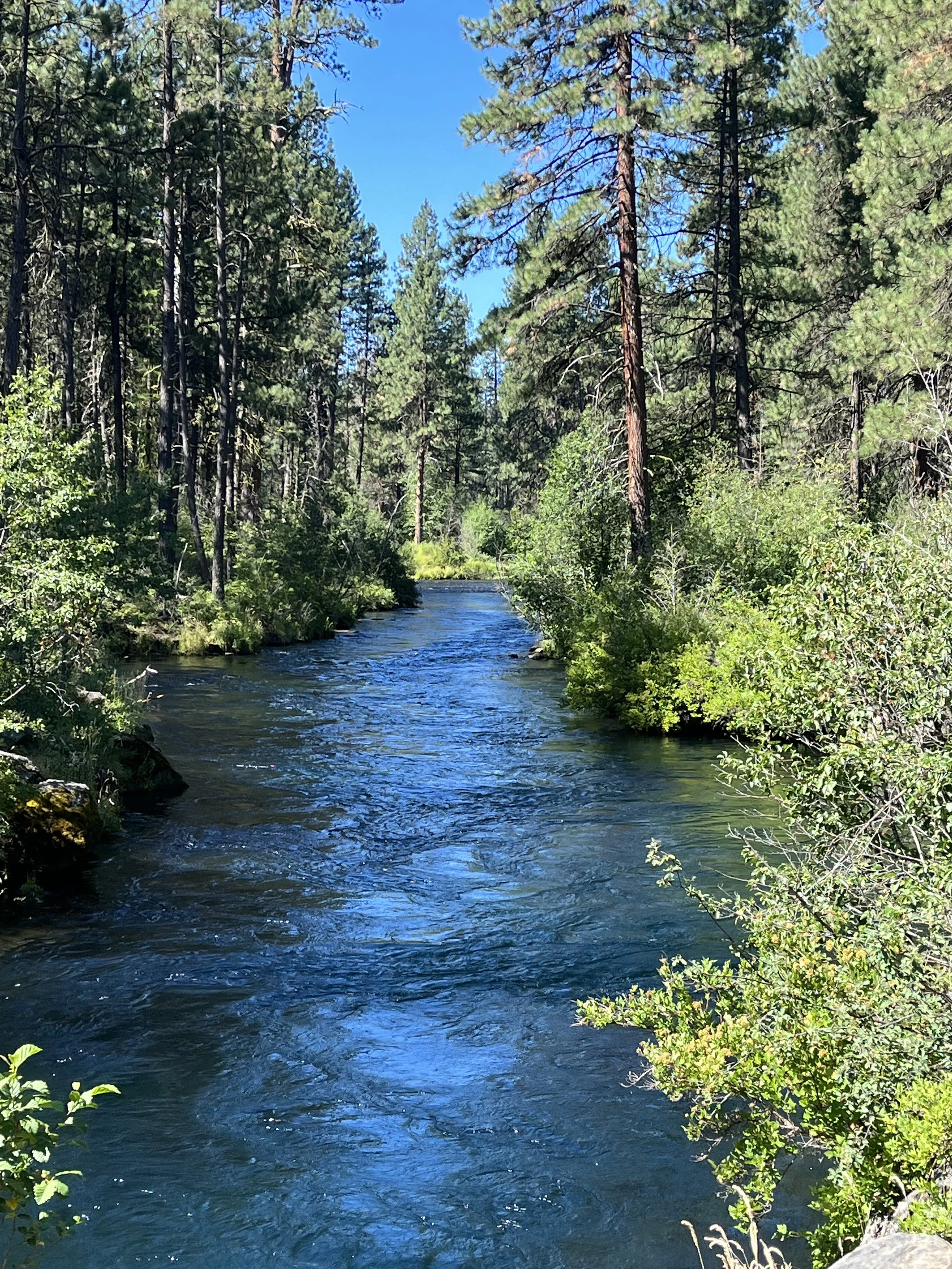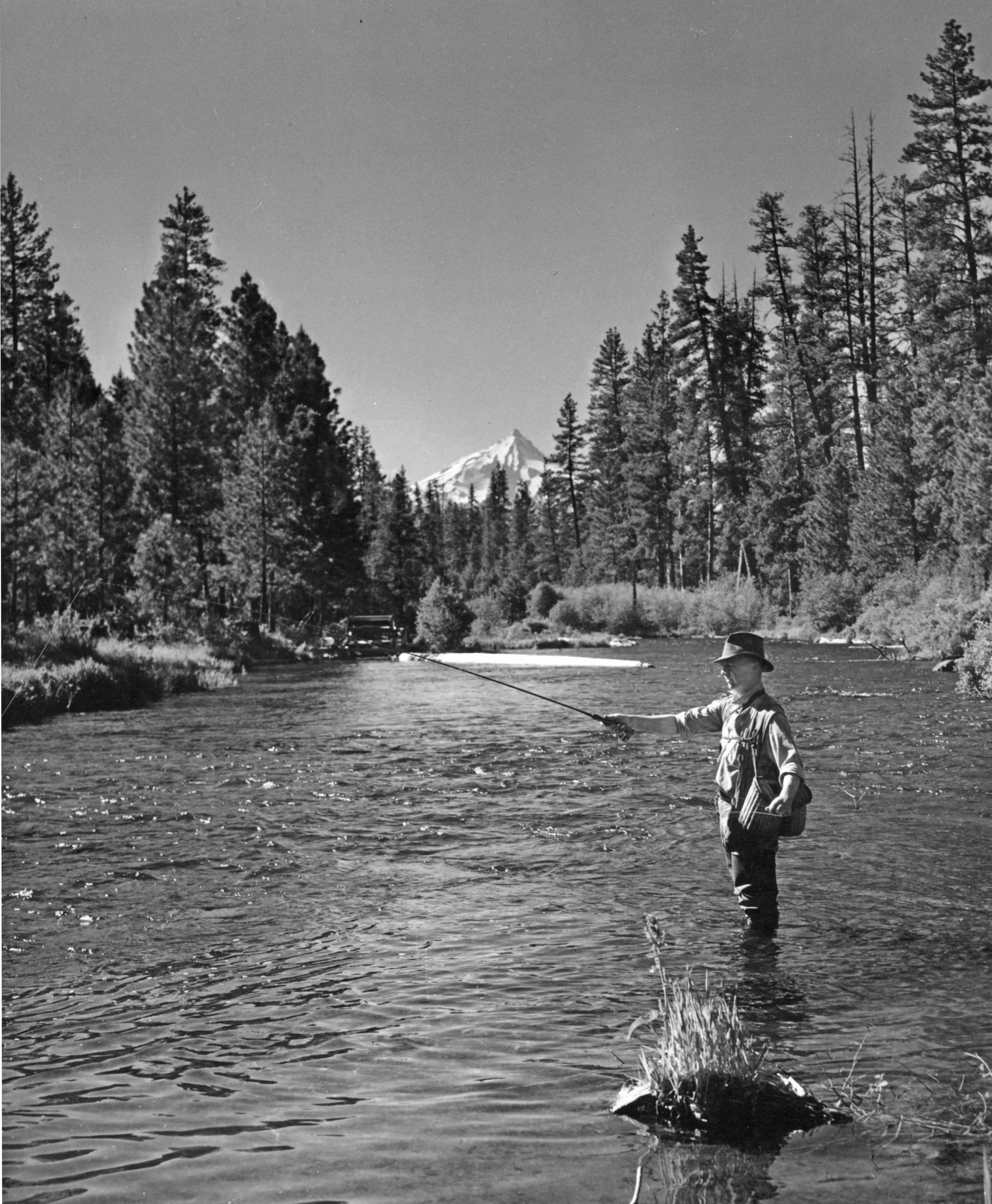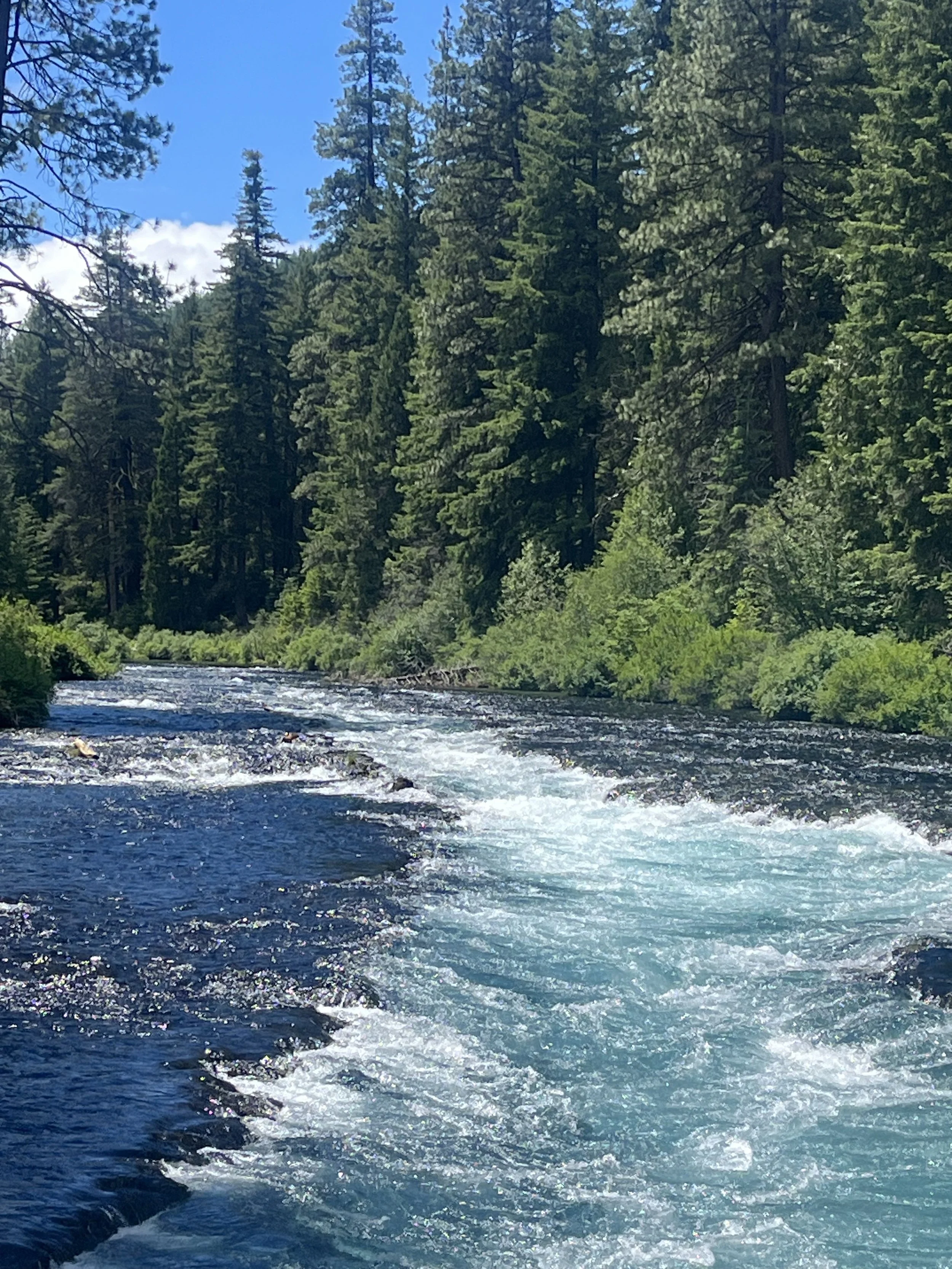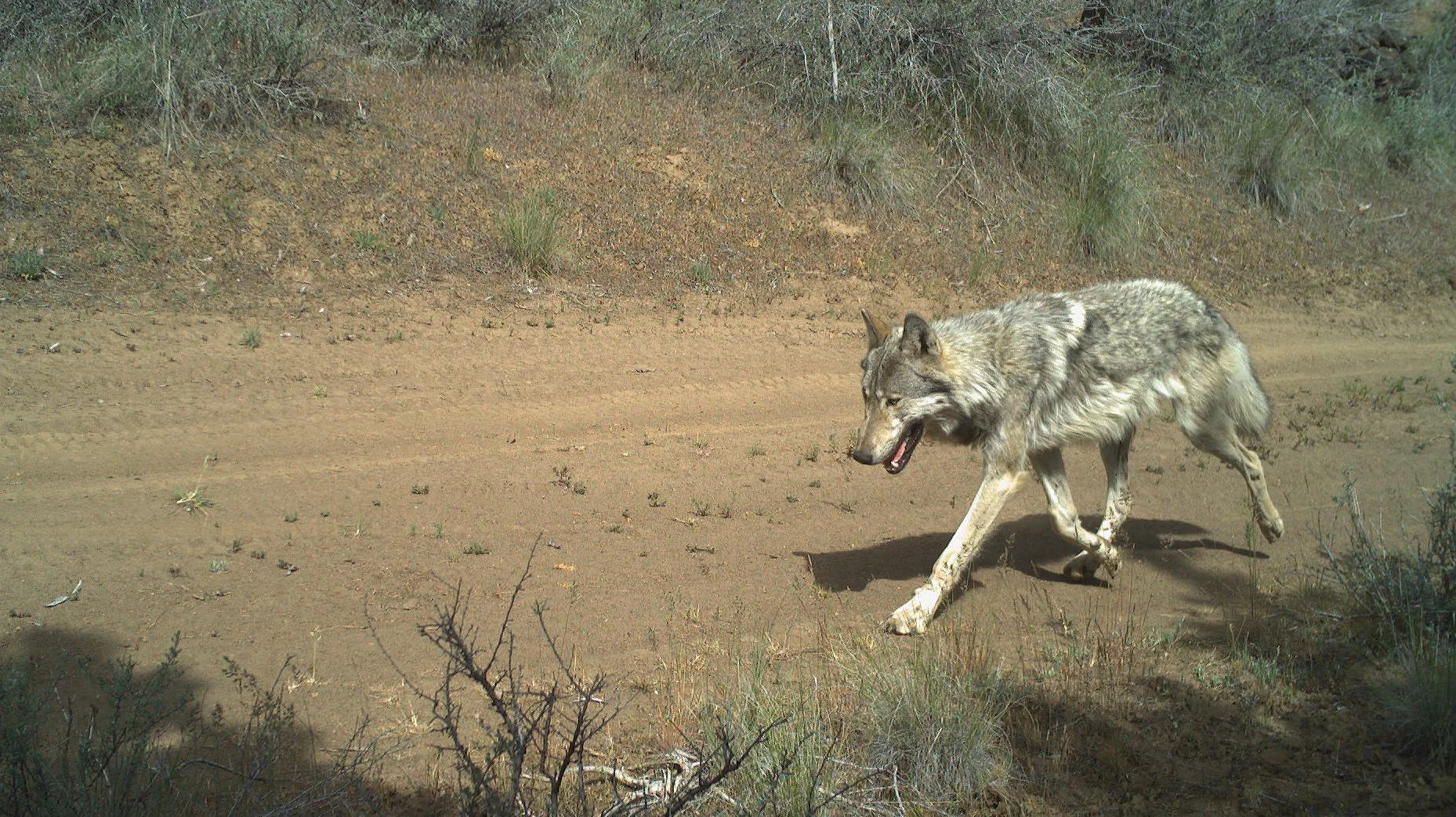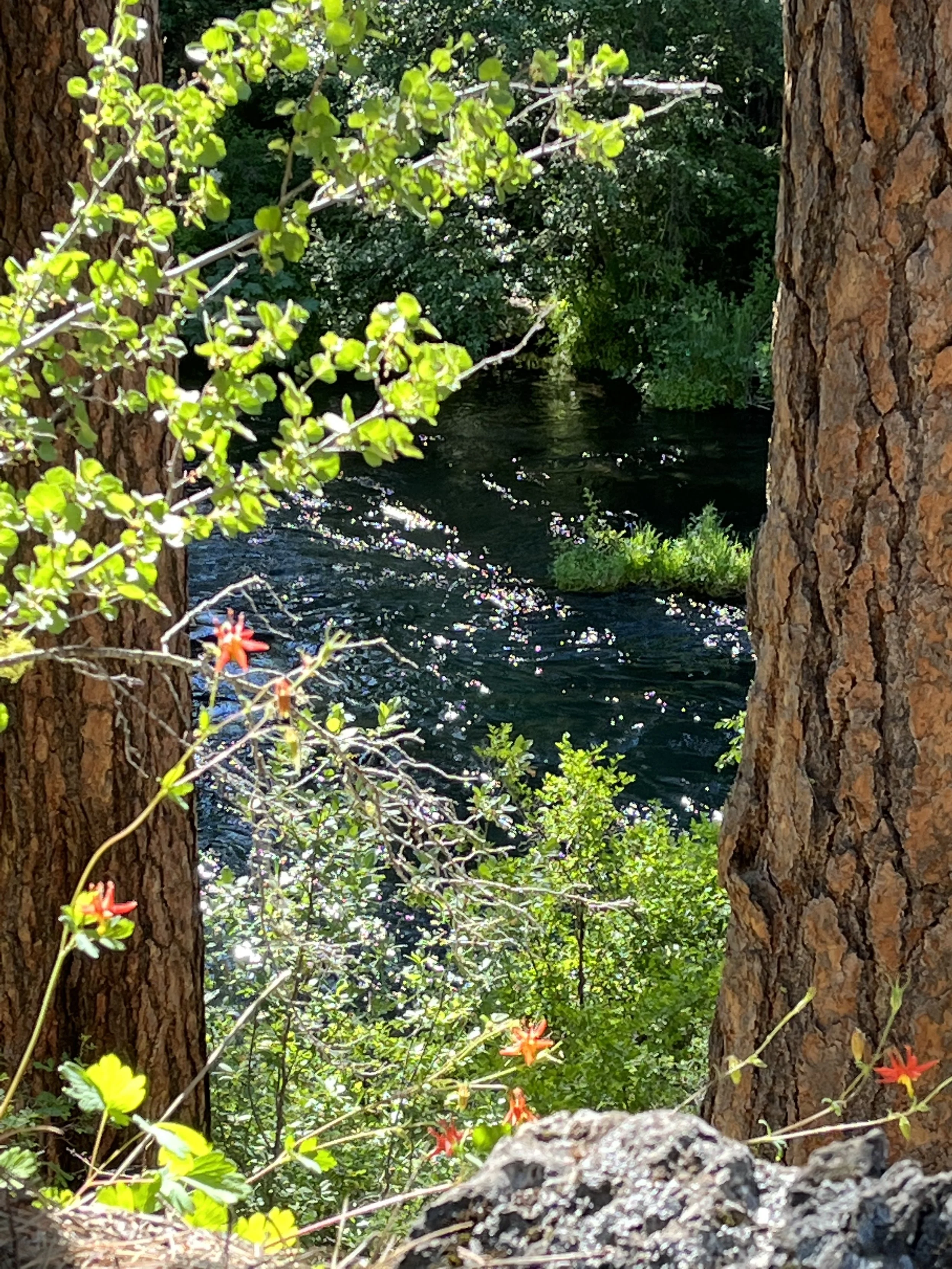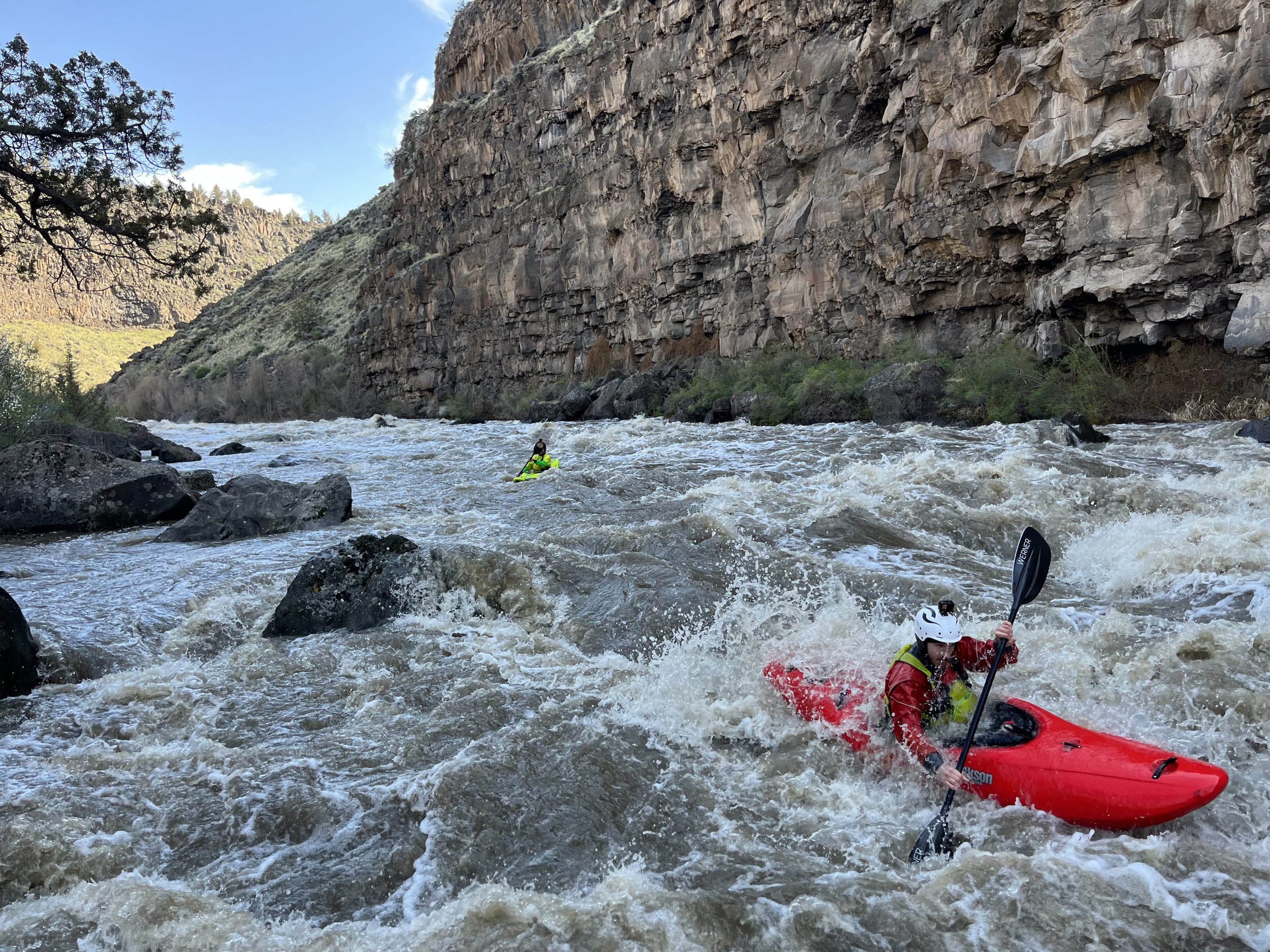Marvels of the Metolius
By Carol Macbeth, Staff Attorney
Just northwest of Sisters, nestled beneath the towering peaks of the Cascade Range, lies one of Central Oregon’s most enchanting gems: the Metolius River Basin. Venture yonder to these parts and you’ll discover a landscape teeming with wild beauty. The Metolius region is a pristine ecosystem, home to an array of wildlife, plants, and natural wonders that have earned our enduring admiration and deserve lasting protection.
-
The Metolius is magical year-round!
-
A dynamic and pristine spring-fed watershed featuring world-class fisheries, hiking trails, and classic Central Oregon views.
-
So many! Fly fishing, hiking, biking, foraging, birdwatching, wildlife viewing, bathing in the glorious abundance of nature.
The Metolius River. Photo: Carol Macbeth
Wild River, Wild Fish
Spawning kokanee (Oncorhynchus nerka) in the Metolius River.
Wettin’ a line back in the day (archival).
The Metolius River is famous for the way it springs forth, fully-grown from the base of Black Butte. Undammed and driven by groundwater fed by snowmelt from the Cascades, the Metolius remains cold and flows steady year-round. These conditions create ideal habitat for the wild, native fish of the basin, including redband trout, bull trout, and Chinook salmon.
The presence of thriving bull trout populations is an especially good indicator of the river’s health, as they are particularly sensitive and rely on cold, clean water year round to survive and spawn. The crystal spring flows of the Metolius draw anglers from across the globe to try their luck at this notoriously challenging fishery, but the practiced local osprey perched along the course of the river often enjoy better luck.
Wizard Falls. Photo: Carol Macbeth
See it for yourself
Stroll the West Metolius River Trail from Lower Canyon Creek Campground to the picturesque Wizard Falls.
This easy 5-mile out and back will take you along the lower river past springs gushing forth from the hillside to the river’s most famous cascade.
While you’re there, pay a visit to Fish Hatchery at Wizard Falls to learn more about the history of the Metolius’ famous fisheries, which in 1996 became one of Oregon’s first rivers to be managed entirely for wild, native trout.
Charismatic Megafauna
A wolf from the Metolius pack. Photo: ODFW
In recent years, gray wolves have begun to reestablish themselves in Central Oregon. While sightings remain rare, the wolves of the Metolius pack range from Camp Sherman to Green Ridge and Black Butte, with confirmed observations and trail cam footage documenting the return of these native apex predators to historic territory. Their comeback is a testament to the resilience of the species as well as what can happen when the landscapes that support them are preserved and stewarded to give them a chance.
The Metolius is also home to one of the more elusive and misunderstood animals of the West: the cougar. Though rarely seen, these secretive big cats roam the ponderosa forests and rugged canyons that surround the river, playing a vital role in maintaining balance within the ecosystem.
Green Ridge (left) rises to the east of the Metolius River.
See it for yourself
Traverse the Green Ridge Trail by bike. Enjoy a mix of single and double track along this 12-mile ridgeline, catch expansive views of Three Finger Jack, Mt. Jefferson, and the river below, and keep your eyes peeled for signs of these elusive creatures.
Wonderous Wildflowers
Streamside bigleaf lupine (Lupinus polyphyllus). Photo: Bruce Jackson
Come spring and early summer, the forests and meadows of the Metolius Basin burst into color. Bright yellow blooms of arrowleaf balsamroot line the trail edges. Lupine paints hillsides in violet and blue. Scarlet gilia, columbine, and Indian paintbrush add splashes of red and orange throughout. The area’s floral richness is a result of its varied elevations and microclimates which support a diversity of native plants. This vibrant natural display isn’t just a feast for the eyes—it’s also essential for pollinators like native bees, butterflies, and hummingbirds. These species are interdependent on one another, which serves as a gentle reminder: what benefits the wildflowers also benefits the rest of the ecosystem (including us).
Columbine between ponderosa pine. Photo: Carol Macbeth
See it for yourself
Trails along the Metolius River offer opportunities to view wildflowers and native plants year-round. The Deschutes Land Trust’s Metolius Preserve is also a great place to find blooms of columbine and even the rare native plant Peck’s penstemon.
A Place Worth Protecting
The Metolius in fall. Photo: Wasim Muklashy
These marvels of the Metolius (and many others!) aren’t simply accidental—they are the bounty of a relatively intact and healthy landscape. At Central Oregon LandWatch, we’ve worked for nearly 40 years to ensure that the Metolius Basin remains a sanctuary for native flora and fauna—as well as a remarkable place where Central Oregonians can escape to true nature for generations to come. We remain vigilant and proactive in guiding a future that upholds this vision and promise.
The Metolius is more than a river—it’s a real treasure of Central Oregon that connects us to what is wild, wondrous, and worth defending.
To have seasonal guides and action alerts delivered to your inbox, sign up for LandWatch updates.


